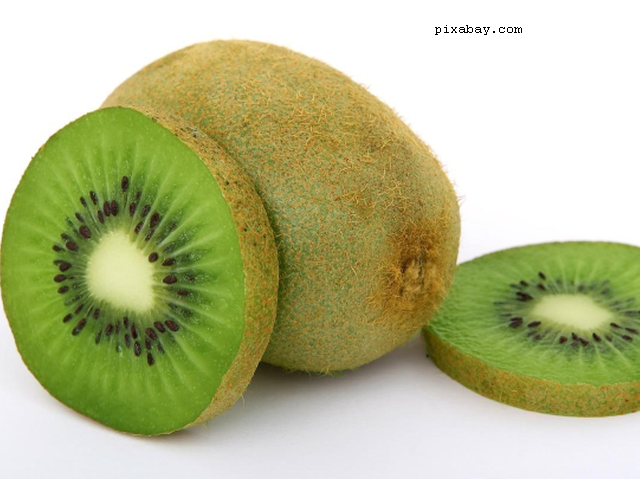Exotische Früchte sind reich an Vitaminen und widerstandsfähig gegen Temperaturschwankungen und Schädlinge. Demnach sind sie besonders geeignet für den organisch-biologischen Anbau. Sie wären also auch für die Landwirte in Rumänien eine denkbare Alternative.
Florin Stănică ist Professor für Baumzucht an der Universität für Agrarwissenschaften und Veterinärmedizin in Bukarest. Die Geschichte geht auf das Jahr 1992 zurück, als eine Gruppe von der Universität durch ein Tempus-Förderprogramm eine Studienreise nach Italien unternahm. Die Vertreter der Bukarester Universität besuchten die Universität in Perugia. Dort hatten sie die Gelegenheit, die Kiwi-Frucht näher kennenzulernen. Sie stellten fest, dass die Zuchtbedingungen ähnlich waren zu den Zuchtbedingungen der Pfirsichbäume. Sie kamen somit auf die Idee, Kiwi-Früchte in Ostrov am Donauufer anzubauen. Dort seien die Zuchtbedingungen am günstigsten für Pfirsichbäume wie auch für Weinreben. Folglich auch für die Zucht von Kiwi-Früchten — überlegten die Fachleute. Mehr Einzelheiten dazu brachte Florin Stănică:
Gesagt, getan — im Frühjahr 1993 gründeten wir mit Hilfe des örtlichen Staatsunternehmens für Landwirtschaft eine Kiwi-Frucht-Plantage, die sich auf 2 Hektar erstreckte. Wir ließen aus Italien 1000 Stück einer hybriden Kiwi-Fruchtart nach Rumänien bringen — es handelte sich um die sogenannte kleinfruchtige Kiwi. Diese Kiwi-Fruchtart ist besonders frostbeständig, also kann sie auch in Pflaumen-Anbaugebieten gezüchtet werden. Seit 1993 untersuchen wir an der Universität für Gartenbauwirtschaft die Akklimatisierungsmöglichkeiten für Kiwi-früchte. Drei Kiwi-Fruchtarten interessierten uns für ihre Ernährungszwecke: die Kiwi-Frucht mit behaarter Schale, die gelbe Kiwi sowie die frostbeständige Kiwi-Sorte. In der Zwischenzeit lernten wir, Kiwi-Früchte zu vermehren, die richtige Technologie für ihre Zucht einzusetzen und letztendlich sogar zwei rumänische Kiwi-Sorten genehmigt zu bekommen — ein Ergebnis der rumänisch-italienischen Zusammenarbeit. Die zwei in Rumänien zugelassenen Sorten wurden bei der EU unter der Bezeichnung Vip Green und Vip Red registriert. Dabei handelt es sich um zwei frostbeständige Sorten, eine grüne und eine rote.“
Seit fast 10 Jahren werden an der Universität Auswahlarbeiten durchgeführt, um grüne und gelbe Hybridsorten abzutrennen. Derzeit gibt es schon vier sehr interessante Fruchtauslesen, die große, gut schmeckende Früchte anbieten. Professor Florin Stănică fügte Folgendes hinzu:
Es gibt in Rumänien günstige Bedingungen für den Kiwi-Frucht-Anbau. Große Früchte können tatsächlich nur in begrenzten Anbaugebieten angebaut werden, dort wo auch Pfirsichbäume gezüchtet werden können — also vor allem im Süden und Westen des Landes. Doch die widerstandsfähigeren Sorten können fast überall, in allen Baumzuchtgebieten in Rumänien gezüchtet werden. Die Züchter brauchen nur ein bisschen Mut.“
Eine weitere von Professor Florin Stănică empfohlene Kiwi-Sorte wartet derzeit auf die Zulassung. Die Frucht heißt Simina“, und kann dort angebaut werden, wo die Temperaturen im Winter die Grenze von -25 Grad Celsius nicht überschreiten. Sie bedarf keiner speziellen Behandlung:
In Italien lernte ich auch die Fruchtsorte Asimina Triloba kennen. Die exotische Frucht ist unter anderem auch als Indianerbanane bekannt, die Amerikaner nennen sie Pawpaw. Ich brachte die Fruchtsorte im Jahr 2000 nach Rumänien. Sie stammt aus dem Osten des nordamerikanischen Kontinents und ist besonders frostbeständig, hält Temperaturen von bis zu -25 Grad Celsius aus. Die Indianerbanane sieht viel mehr wie ein Mango oder eine Papaya aus. Der Geschmack der Pawpaw kann am ehesten als eine Mischung aus Mango, Ananas, Aprikose und Banane mit einem Hauch von Vanille beschrieben werden, wobei das Fruchtfleisch ähnlich weich und cremig ist wie das von herkömmlichen Bananen. Die Pawpaw ist eine besondere exotische Fruchtsorte. Sie muss auch nicht phyto-sanitär behandelt werden, denn die Frucht ist sehr widerstandsfähig. Und auch besonders schön, sie kann auch zu dekorativen Zwecken verwendet werden, denn sie hat große Blätter und die Blüten sind auch sehr schön.“
Wir erfuhren, dass die Indianerbananen viele Mineralien beinhalten. Sie haben auch einen hohen Gehalt an Kalium — nur die Guave sei reicher an Kalium als die Pawpaw. Die exotische Frucht gelangte zum ersten Mal in Rumänien im Jahr 1926. Eine Familie siebenbürgischer Auswanderer brachte sie aus Ohio nach Rumänien. Familie Suciu wohnte in der Ortschaft Pianu Nou, im Kreis Alba.
Professor Stănică erwähnte eine weitere besondere exotische Frucht — die Jojoba, oder die Dobrudscha-Dattel.
Diese exotische Frucht kommt in der Dobrudscha vor, bei Ostrov, in der Nähe der ehemaligen Burg Durostorum. Wir stießen auf die Dobrudscha-Dattel auch bei Jurilovca, an der Donau, oder in der Ortschaft Mahmudia, in der Nähe der Burg Saslovia. Diese Früchte scheinen in der Nähe ehemaliger römischer oder griechischer Siedlungen zu wachsen. Wir wissen, dass die Sorte zu Zeiten des Kaisers Octavius Augustus hergebracht wurde. Die hierzulande wachsenden Sträucher bekommen kleine süß-säuerliche Früchte, die aber nicht besonders schmecken.“
Auch diese exotische Fruchtsorte ist besonders widerstandsfähig. Sie hält sowohl sehr hohe wie auch sehr niedrige Temperaturen aus. Zum Schluss bleibt uns demnach nichts anderes übrig, als die lokalen Züchter anzuregen, die geschmacksvollen und vitaminreichen Früchte auch hierzulande anzubauen.

